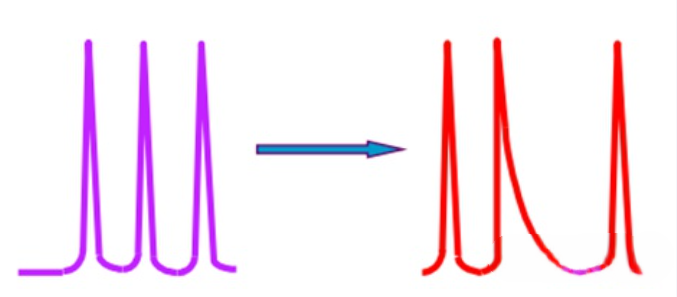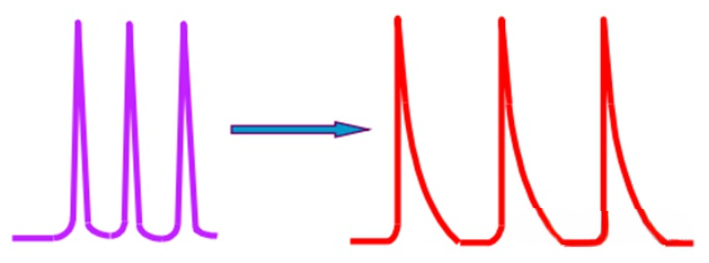Analysis and treatment methods of causes of chromatographic peak tailing(Ⅰ)
Every experimenter will always encounter many times of chromatographic peak tailing in his experimental career. When it comes to chromatographic peaks, it is estimated that any chromatographic analyst hopes that the peak shapes produced by his or her experiments are very symmetrical, sharp, and meet the resolution requirements. So why do chromatographic peaks tail? Is the pillar broken? Or an operational error?
HPLC peak tailing
Some chromatographic peaks are tailing

One case is a chemical effect, where the residual silanol groups form hydrogen bonds with the basic groups of the analyte.
At this time, you can reduce the mobile phase pH, add a tailing agent (TEA) to eliminate secondary chemical effects, or use an end-capped chromatographic column.
If you need to use it under high pH conditions, you can choose a column that is resistant to high pH.
There are also small peaks flowing out at the tail of the large peak or interfering with co-eluting peaks.
You can first adjust the chromatographic conditions to improve the separation. If there is no improvement, you can also use DAD to detect the purity of the peak.
All chromatographic peaks are tailed

Extra-column effect, post-column diffusion of chromatographic peaks
For example, when installing a chromatographic column, you need to pay attention to the matching of the connecting nut. Columns with small column bed volumes need to use thinner pipes.
Column contamination
You can first check whether the mobile phase and sample are prone to contamination.
If it is metal ion contamination, you can use acid washing (such as methanol and phosphoric acid water washing), or use a high-purity silica gel chromatography column;
If there is contamination caused by the adsorption of other strongly retained impurities or column head contamination, you can consider backflushing or regenerating the column.
Sample overload, or sample solvent mismatch
You can first reduce the injection volume to check whether tailing also occurs.
In addition, if the guard column fails, it will also cause peak tailing. At this time, we remind you that you need to replace the guard column~
In addition, the solvent strength of the sample is higher than that of the mobile phase, the dead volume outside the column is too large, the sample is overloaded, the injector rotor needs to be replaced, and instrument system problems can also lead to the appearance of tailing peaks.
Back to List
-
 下午4:09Weighing the Pros and Cons of PTFE/Silicone Septa
下午4:09Weighing the Pros and Cons of PTFE/Silicone Septa -
 下午4:05Decoding Vial Discard Guidelines: Ensuring Precision in Chromatography
下午4:05Decoding Vial Discard Guidelines: Ensuring Precision in Chromatography -
 下午5:01Navigating Micro Inserts for HPLC Vials: A Comprehensive Guide
下午5:01Navigating Micro Inserts for HPLC Vials: A Comprehensive Guide -
.jpg) 下午2:02Common faults and solutions of automatic samplers(2)
下午2:02Common faults and solutions of automatic samplers(2) -
 下午5:08Ensuring Sample Integrity: Navigating EPA Storage Vials Stability Guidelines
下午5:08Ensuring Sample Integrity: Navigating EPA Storage Vials Stability Guidelines

